So far in the Know a Knot! series we have covered one anchoring knot, one joining knot, and one middle-of-the-line knot. Today we are going to cover one of the most important knots you can know: the bowline.
The Bowline
The bowline puts a strong, fixed loop or “eye” at the end of a rope. You can tie a bowline around an object, or you can tie it through an object. As an example of the former I have tied a bowline around my body as part of a safety line for SPIE-rigging. As an example of the latter, just today I tied a bowline around the handle of a chicken waterer. The bowline is probably my most frequently-used knot – it’s just really damn useful to know how to put an eye at the end of a rope.
I’m told the bowline is closely related to the sheet bend. I don’t know how the relation between two knots is categorized but you can certainly see visual similarities between the two. Seriously, don’t put off learning this knot It is very easy, very good, makes you look competent if you know it (the reverse is also true in reference to that last item). Get good at the bowline!
The Bowline: Step 1
Create a loop in your rope.
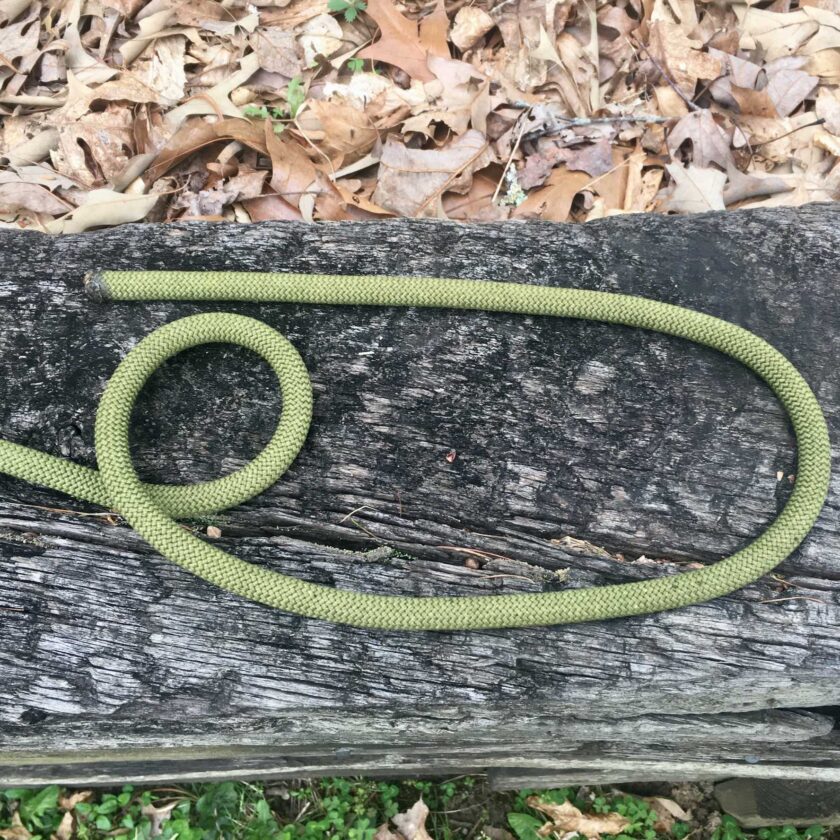
Bowline: Step 2
Pass the working end of the line through the loop. Pay attention to the photo below for the exact routing.
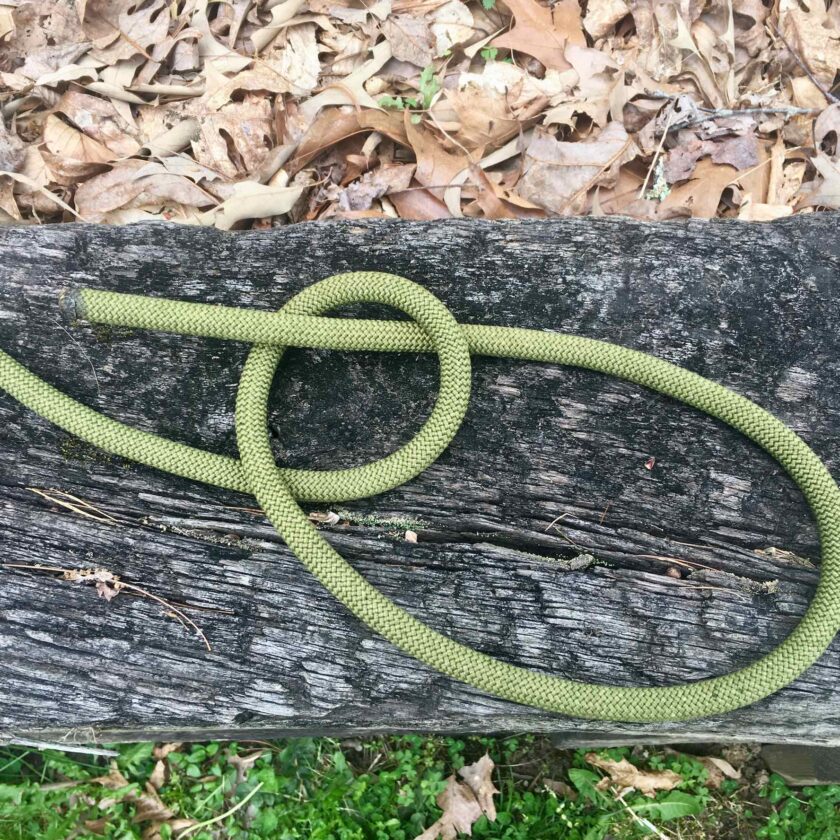
Bowline: Step 3
Pass the working end around behind the standing end as shown below.
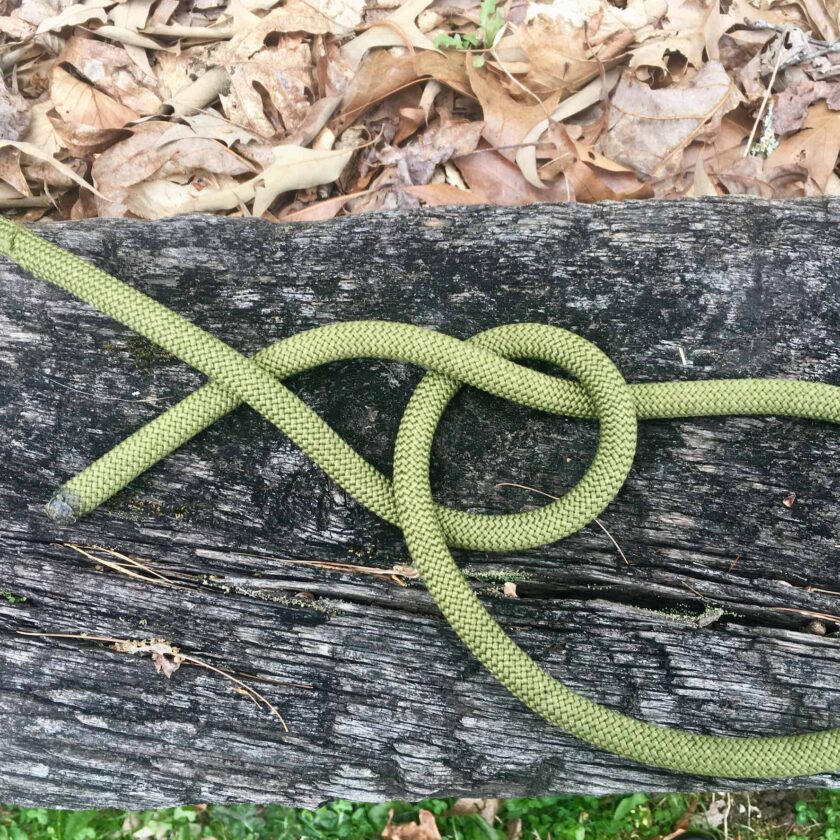
Bowline: Step 4
Bring the working end back through the loop.

Bowline: Step 5
Neatness counts, so clean it up! And that’s it, you’ve tied a bowline!
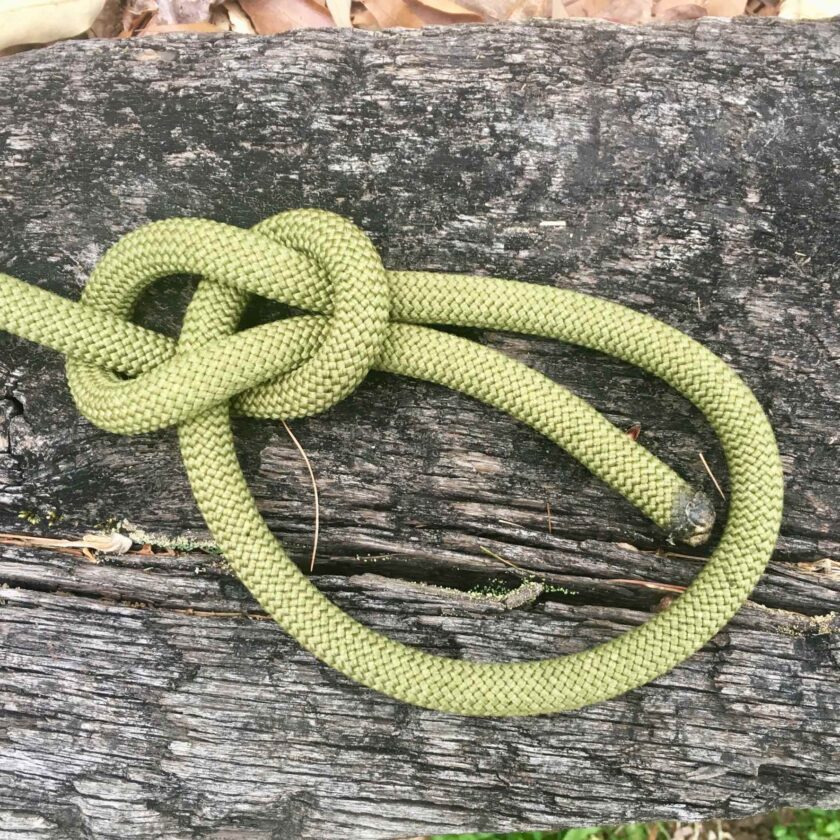
Some Other Stuff
Since this was a really quick one to write, I’ll throw a couple of other things in here. First – I’ve mentioned this before – but length of the “pig tail.” Our standard in the military was longer than one’s fist, but not longer than one’s fist, plus his extended thumb. I think this is a reasonable standard.
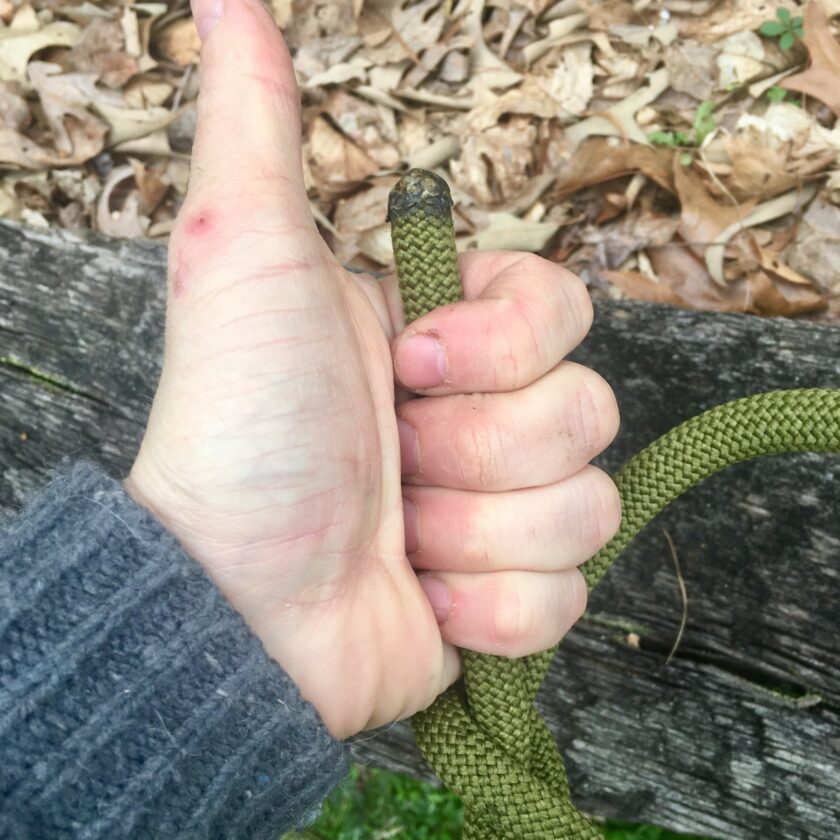
If you’re just tying the knot over and over, it helps to have an arbitrary standard for how big you want the eye to be. Having a standard helps to you tie the knot to a criteria. Our standard was big enough to pass your fist through, but not big enough to pass your head through.
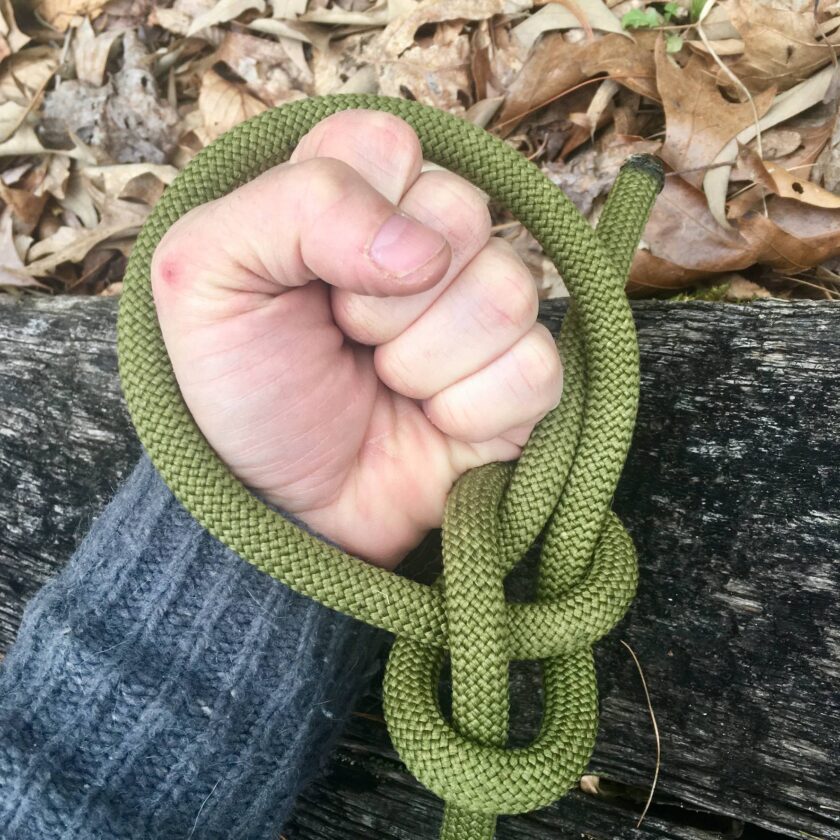
Stay tuned for the next knot in the Know A Knot! series. I’m not sure what it’s going to be yet, but we are still within the realm of “essential” knots. See you in a week!





